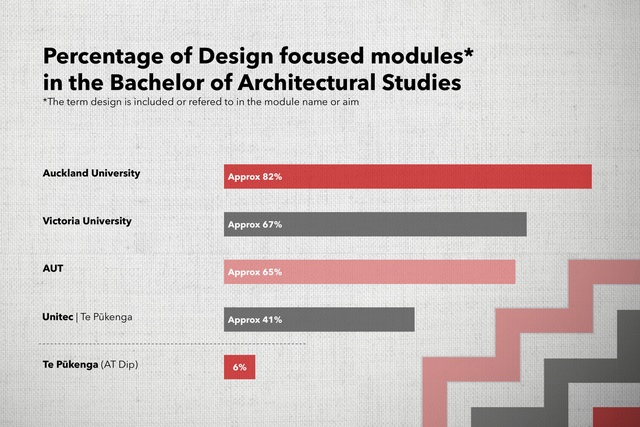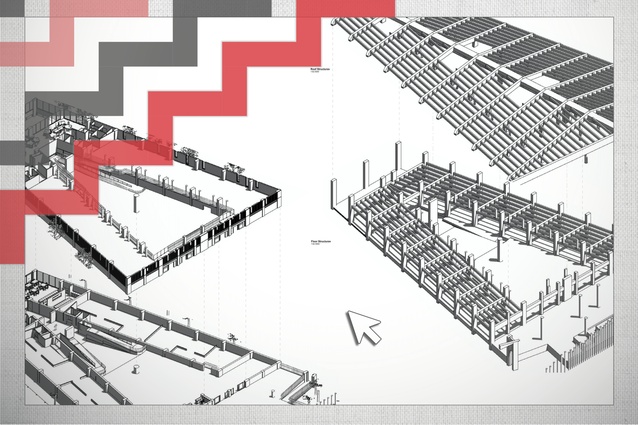Industry ready? Architectural graduates vs. technicians
Opinion: Are architectural graduates set up to succeed in industry? More importantly, after more time, more fees, and lower earnings… are architectural graduates more prepared to start practising than graduating architectural technicians? Joseph McAuley considers the differences between the two qualifications.
Qualified architectural technicians (ATs) graduate with a diploma in two years and the closest comparison is the three-year architectural graduate bachelor’s degree (BAS), which is more design-focused. Design qualifications have always been heavily leveraged by architects to distinguish themselves as a tier above architectural designers, who typically start off as technicians. The Schools of Architecture claim that their education programmes (bachelor & master programmes) develop ‘superior’ skills and knowledge in their joint submission to Ministry of Building, Innovation & Employment (MBIE) regarding the ongoing Architect’s Act review.
However, in advocating for architects, these schools of architecture claimed their programmes were superior, at least compared to “no formal education.” After circa $50k in student fees and five years of study, I would argue that setting the bar at better-than-nothing is not very inspiring for prospective students and future architects. It’s unclear if these schools were also implying that the opposition in this debate (architectural designers with LBPs) have no ‘formal’ education, which would only reinforce how disconnected they are from industry.
The primary difference between the ATs Dip and the BAS (besides the 2–3 year timeframe) is the divergent focus of these qualifications in terms of the skill sets they provide. Unsurprisingly, this is most evident when considering design. The AT Diploma (recently unified nationally by Te Pūkenga) features only one design module out of the total 16 (6%).1 Whereas, across the four Schools of Architecture in the aforementioned joint submission (AUT2, Unitec3, Vic4 & Auckland5), architectural graduates can expect an average of 13 design-focused modules* (64%). An indisputable 10-fold difference in the number of design modules.
“As an industry, we understand and appreciate the value of good design. The question is does focusing so heavily on design, and specifically the artistry of architectural design, benefit architectural graduates and consequently our industry?”

As an industry, we understand and appreciate the value of good design. The question is does focusing so heavily on design, and specifically the artistry of architectural design, benefit architectural graduates and consequently our industry?
Suggestions to close the design gap are commonly viewed as an affront to architects, reducing the clear threshold between them and LBP designers (Licensed Building Practioners). Poorly worded questionnaires by MBIE seeking feedback on the ongoing Architect’s Act review have arguably not helped quell the fears for the security of that threshold either.6 Although therein lies the fundamental issue, an industry that we all share, divided — not by LBP classes and registration — but by an education system that separates us long before we enter the industry.
“Where ATs specialise in BIM and technical skills, architectural graduates specialise in design… One would expect that architectural graduates with a BAS, and an extra year of study, could match an AT graduate and have superior design skills.”
Where ATs specialise in BIM and technical skills, architectural graduates specialise in design and no one receives a reasonable balance. Efforts to separate these two career paths are so concerted, that arguably ATs come out with a stronger generalised knowledge in construction, reflective and necessary to enter industry. One would expect that architectural graduates with a BAS, and an extra year of study, could match an AT graduate and have superior design skills.

The role of an architect continues to face increasingly complex responsibilities that must be passed on to new members of the design team, but those are teams led by construction generalists not contributing aesthetic specialists. No one else in the wider construction industry can bring disciplines and designs together like architects, but our architectural graduates often aren’t ready for industry and the generalist responsibilities required, because we over-specialise in design too early.
In this author’s opinion, there are three main areas that demonstrate how this overly-specialised education is failing architectural graduates entering industry:
1. Design & everyday practice
When graduates start practising, in their first year or even first five years, do they spend an average of 64% of their work time designing? No. During my time as the Emerge Director, leading the largest network of emerging practitioners in architecture, I never heard of a graduate who was given more time for concept design than for detailed design. I doubt many practitioners are that lucky even at the peak of their careers.
2. Design & registration
When graduates progress to registration — the typical next milestone in our industry — are they assessed on their design abilities? No. And why not? If Registered Architects are so concerned about distinguishing registration from LBP design classes (that also doesn’t assess design abilities, despite the name) why not include some form of assessment around design? If only to acknowledge that we don’t stop learning how to become better designers after formal education. I would like to pre-empt a few common retorts to this suggestion, but registration is a much bigger kaupapa… for another article.
3. Design & the future of our industry
Lastly, our qualifications need to align with the needs of our industry, so that graduates are equipped with the skills that make them employable. Over the last few decades, the leading employable skillset for ATs and architectural graduates has been Building Information Modelling (BIM). Skills like this are becoming more common — part of a growing fundamental IT competency in our industry — and new skills that are less common are already superseding them such as tikanga waihanga (cultural design skills and competency). New skill sets entering architectural practice are already being offered to students by way of electives or optional/alternative pathways but seem to be a long way off from entering the core mainstream curriculum.

Students in any school, in any industry, study in order to start practising. Nobody expects to practice at the same level as an experienced architect on day one, but as a graduate, there is an expectation you’ll be ready for industry. It’s somewhat disappointing that our schools, governing bodies, and industry stand resolved year after year knowing that students give their time, money, and energy to these programmes that don’t resemble or fully prepare architectural graduates for the industry.
Students trust their kaiako and schools to put them on the right pathways with the skills needed to start their careers. When students realise that two-thirds of their time isn’t designing, but rather more documentation that is better suited to architectural technicians — who have at least three years more earnings and experience in industry than them — it’s hard to hold on to that trust.
Faith that your industry is being managed well, and faith that practitioner well-being and readiness are being prioritised more than a design gap. We are tuākana to these tēina. If we strive for the best in our profession, it starts by giving students the best education, so they can go further than we could have, and elevate our industry more than we could have. But they can’t do it without us. Not until we forgo the ideals of what an architect once was, and embrace what they could be.
References:
1. Te Ara | Te Pūkenga. ‘New Zealand Diploma in Architectural Technology.’ Accessed March, 2024; https://www.ara.ac.nz/products/programme/nz2416-stru-new-zealand-diploma-in-architectural-technology/
2. AUT. ‘Bachelor of Architecture and Future Environments: What you study.’ Accessed April, 2024; https://www.aut.ac.nz/study/study-options/architecture-and-built-environment/courses/bachelor-of-architecture-and-future-environments
3. Unitec Institute of Technology. ‘Bachelor of Architecture: Programme Structure.’ Accessed April 2024; https://www.unitec.ac.nz/career-and-study-options/architecture-and-architectural-technology/bachelor-of-architectural-studies
4. Victoria University Of Wellington. Issued March, 2024. Architecture Handbook. ‘BAS degree structure.’ Pg. 7.
5. Auckland University. ‘Bachelor of Architecture: Programme structure.’ Accessed April, 2024; https://www.auckland.ac.nz/en/study/study-options/find-a-study-option/bachelor-of-architectural-studies-bas.html
6. MBIE. August, 2023. Occupational Regulation Reforms: Summary of submissions. Pgs. 25–34.
The opinions expressed on this website are those of the individual writers and contributors and do not necessarily reflect the views of the website owner or its affiliates unless expressly stated. More on our policies can be found in Terms of Use.













